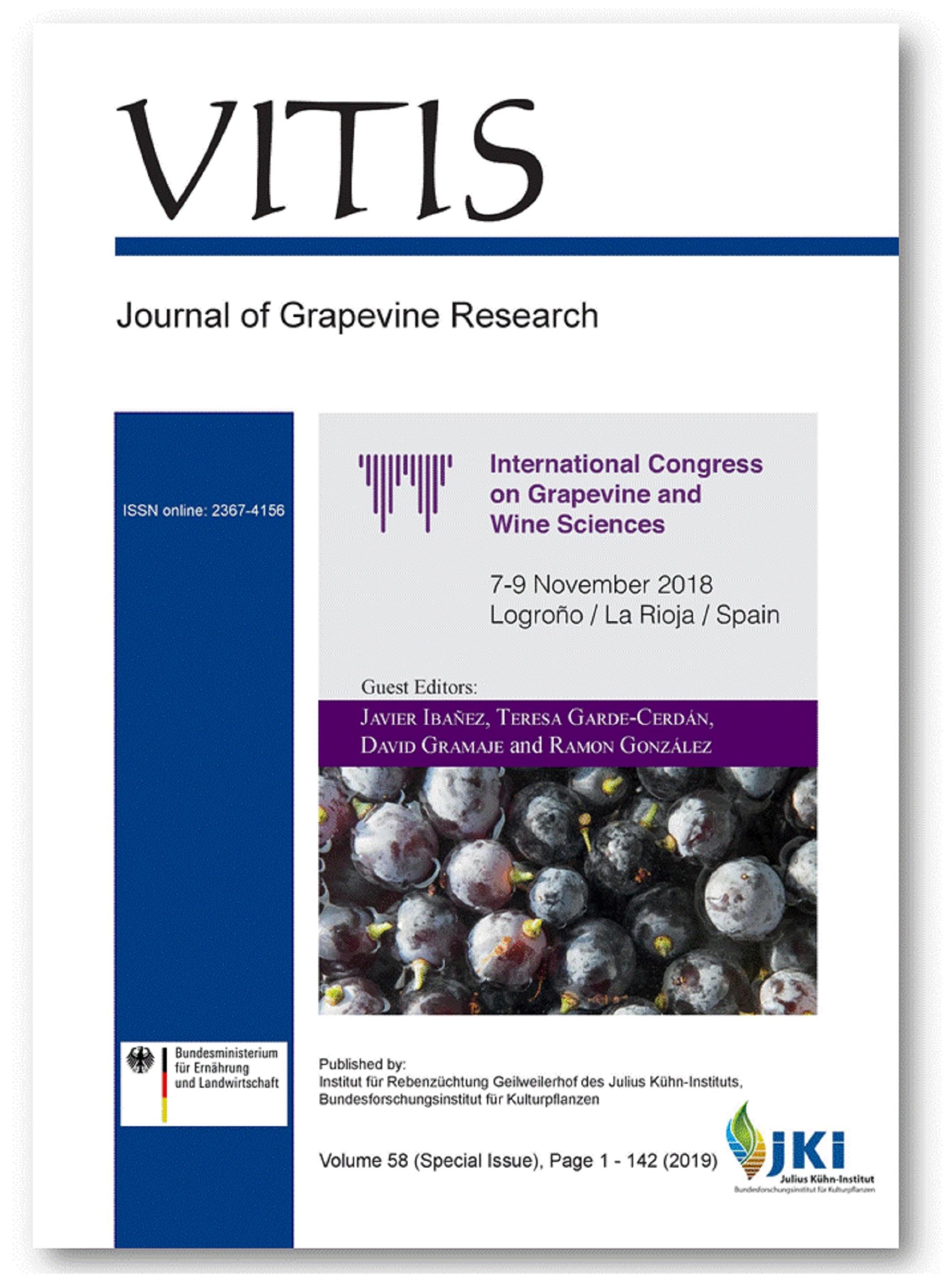Effect of forcing vine regrowth on 'Tempranillo' (Vitis vinifera L.) berry development and quality in Extremadura
DOI:
https://doi.org/10.5073/vitis.2019.58.special-issue.135-142Abstract
In warmer regions, fruit ripening in the wine grape tends to take place during the hottest part of the growing season. This can have negative consequences on the qualitative characteristics of the grape berries at harvest. Forcing vines to regrow can be an aggressive but effective technique to delay the harvest date, but needs to be evaluated carefully in each growing condition. In 2017, in an experimental vineyard in Extremadura, forcing was conducted 3 (F1 treatment) and 22 (F2 treatment) days after anthesis (May 18 and June 6) by hedging growing shoots to seven nodes and removing summer laterals, leaves and primary clusters. Vines grown using conventional practices were used for the Control treatment. Forcing delayed the harvest date from August 22 (Control) to September 14 (F1) and October 19 (F2). Shifting the berry growth period modified the duration of the different fruit development stages. Compared to the Control treatment, the F1 and F2 berries were smaller at harvest, but had similar skin weight percentages; however, the seed weight percentage of the F2 berries was higher. The differences in grape composition observed at harvest between the various treatments were further accentuated in the wines. At harvest, the F2 berries had significantly higher total polyphenol and anthocyanin content than the Control and F1 berries, which had similar values. In the wines, both F1 and F2 characteristics differed considerably from the Control, most notably in the high F2 tannin concentration. These preliminary results from the first year of study indicate the potential of this technique to obtain wine grapes with very different characteristics, offering new viticultural perspectives in warm climate areas.
Downloads
Published
Issue
Section
License
The content of VITIS is published under a Creative Commons Attribution 4.0 license. Any user is free to share and adapt (remix, transform, build upon) the content as long as the original publication is attributed (authors, title, year, journal, issue, pages) and any changes to the original are clearly labeled. We do not prohibit or charge a fee for reuse of published content. The use of general descriptive names, trade names, trademarks, and so forth in any publication herein, even if not specifically indicated, does not imply that these names are not protected by the relevant laws and regulations. The submitting author agrees to these terms on behalf of all co-authors when submitting a manuscript. Please be aware that this license cannot be revoked. All authors retain the copyright on their work and are able to enter into separate, additional contractual arrangements.



